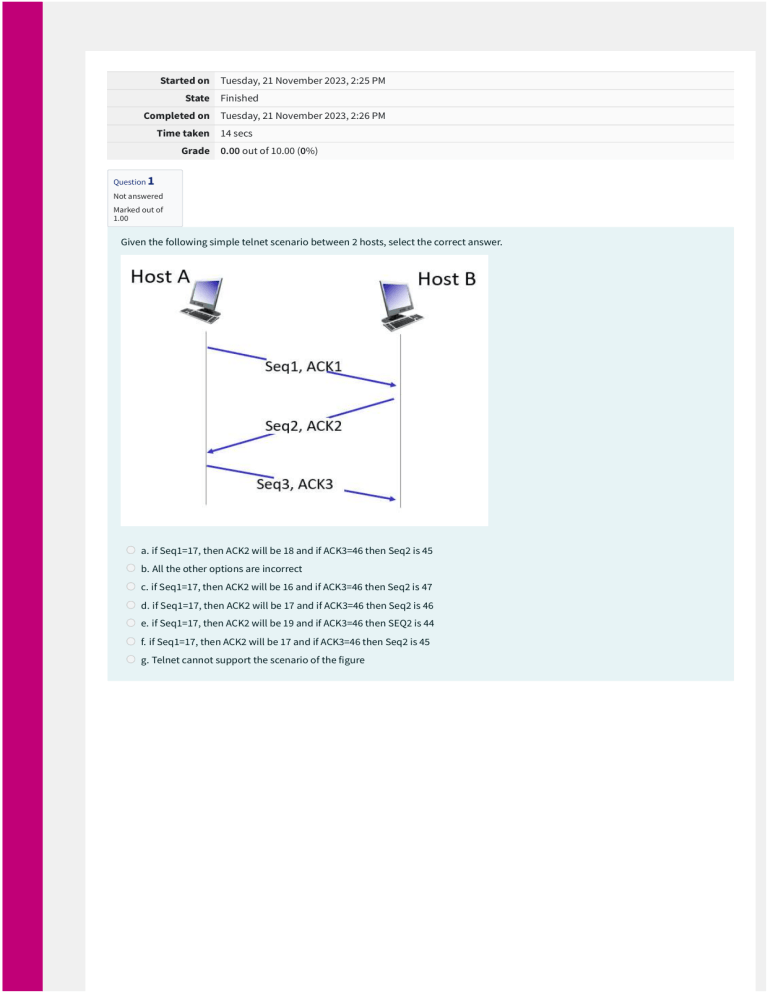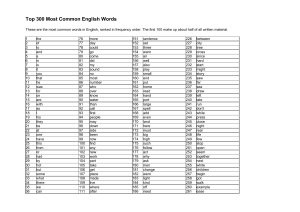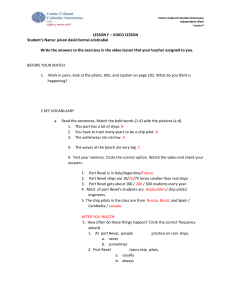
Started on State Completed on Time taken Grade Tuesday, 21 November 2023, 2:25 PM Finished Tuesday, 21 November 2023, 2:26 PM 14 secs 0.00 out of 10.00 (0%) Question 1 Not answered Marked out of 1.00 Given the following simple telnet scenario between 2 hosts, select the correct answer. a. if Seq1=17, then ACK2 will be 18 and if ACK3=46 then Seq2 is 45 b. All the other options are incorrect c. if Seq1=17, then ACK2 will be 16 and if ACK3=46 then Seq2 is 47 d. if Seq1=17, then ACK2 will be 17 and if ACK3=46 then Seq2 is 46 e. if Seq1=17, then ACK2 will be 19 and if ACK3=46 then SEQ2 is 44 f. if Seq1=17, then ACK2 will be 17 and if ACK3=46 then Seq2 is 45 g. Telnet cannot support the scenario of the figure Your answer is incorrect. The correct answer is: if Seq1=17, then ACK2 will be 18 and if ACK3=46 then Seq2 is 45 Question 2 Not answered Marked out of 1.00 Which of the following statements about a DHCP request message are true (check all that are true) a. A DHCP request message is sent broadcast, using the 255.255.255.255 IP destination address b. All options are true c. All options are incorrect d. The transaction ID in a DHCP request message will be used to associate this message with future DHCP messages sent from, or to, this client. e. The transaction ID in a DCHP request message is used to associate this message with previous messages sent by this client. f. A DHCP request message is sent from a DHCP server to a DHCP client. g. A DHCP request message may contain the IP address that the client will use. h. A DHCP request message is optional in the DHCP protocol. Your answer is incorrect. The correct answers are: A DHCP request message is sent broadcast, using the 255.255.255.255 IP destination address, A DHCP request message may contain the IP address that the client will use., The transaction ID in a DHCP request message will be used to associate this message with future DHCP messages sent from, or to, this client. Question 3 Not answered Marked out of 1.00 What is the maximum number of interfaces in the 223.1.5.3/11 network? Answer: The correct answer is: 2097152.00 Question 4 Not answered Marked out of 1.00 Consider the Reliable Data Transfer (RDT) protocol version 2.2 (rdt2.2) with the FSMs for the sender shown below: Suppose that the channel connecting the sender and receiver can corrupt but not lose or reorder packets. Now consider the figure below, which shows four data packets and three corresponding ACKs being exchanged between an rdt 2.2 sender and receiver. The actual corruption or successful transmission/reception of a packet is indicated by the corrupt and OK labels, respectively, shown above the packets in the figure below. Drag and drop the correct answer: At time t=0, the sender state is . At time t=0, the sequence number is . At time t=1, the sender state is . At time t=2, the sender state is . At time t=3, the sender state is Corrupt OK OK 0 1 Wait for ACK 2 Wait for ACK 1 not OK Wait for ACK 1 Wait for ACK 3 Wait for ACK 0 Wait for ACK 0 Your answer is incorrect. The correct answer is: Consider the Reliable Data Transfer (RDT) protocol version 2.2 (rdt2.2) with the FSMs for the sender shown below: Retransmit Suppose that the channel connecting the sender and receiver can corrupt but not lose or reorder packets. Now consider the figure below, which shows four data packets and three corresponding ACKs being exchanged between an rdt 2.2 sender and receiver. The actual corruption or successful transmission/reception of a packet is indicated by the corrupt and OK labels, respectively, shown above the packets in the figure below. Drag and drop the correct answer: At time t=0, the sender state is [Wait for ACK 0]. At time t=0, the sequence number is [0]. At time t=1, the sender state is [Wait for ACK 0]. At time t=2, the sender state is [Wait for ACK 1]. At time t=3, the sender state is [Wait for ACK 1] Question 5 Not answered Marked out of 1.00 Which of the following services may be implemented in a link-layer protocol? Select one or more statements. a. None of Them b. Bit-level error detection and correction. c. Multiplexing down from / multiplexing up to a network-layer protocol. d. e. Lookup and forwarding on the basis of an IP destination address. TLS security (including authentication) between directly connected nodes. f. End-end path determination through multiple IP routers. g. Reliable data transfer between directly connected nodes. h. Only a and c Your answer is incorrect. The correct answers are: Reliable data transfer between directly connected nodes., Bit-level error detection and correction., Multiplexing down from / multiplexing up to a network-layer protocol. Question 6 Not answered Marked out of 1.00 Suppose that TCP's current estimated values for the Round Trip Time (estimatedRTT) and deviation in the RTT (DevRTT) are 236.9 msec. Suppose that the next measured value of the RTT is 395.4 msec and assume α = 0.125, and β = 0.25. Select the correct answer. a. The estimated RTT will always be equal to DevRTT b. The estimated RTT and the deviation are the main parameters used for flow control c. The estimatedRTT a er the first RTT is 256.71 d. All the other answers are incorrect e. The estimated RTT and the deviation RTT are the main parameters used to ensure that the receiver bu er of the TCP socket is not overloaded. f. The RTT Deviation for the the first RTT is 256.71 g. The estimatedRTT a er the first RTT is 375.59 Your answer is incorrect. The correct answer is: The estimatedRTT a er the first RTT is 256.71 Question 7 Not answered Marked out of 1.00 What is meant by transport-layer demultiplexing? a. Taking data from multiple sockets, all associated with the same destination IP address, adding destination port numbers to each piece of data, and then concatenating these to form a transport-layer segment, and eventually passing this segment to the network layer. b. Receiving a transport-layer segment from the network layer, extracting the payload (data) and delivering the data to the correct socket. c. All options are incorrect d. Receiving a transport-layer segment from the network layer, extracting the payload, determining the destination IP address for the data, and then passing the segment and the IP address back down to the network layer. e. Taking data from one socket (one of possibly many sockets), encapsulating a data chunk with header information – thereby creating a transport layer segment – and eventually passing this segment to the network layer. Your answer is incorrect. The correct answer is: Receiving a transport-layer segment from the network layer, extracting the payload (data) and delivering the data to the correct socket. Question 8 Not answered Marked out of 1.00 In regard to Transport Layer protocols and Domain Name System (DNS), select the correct answer(s). a. A video streaming application with 5.2 million users in 3.2 continents that relies on a CDN will use the MX type DNS record for content distribution b. In TCP, If the sender receives 2 additional ACKs for same data, the sender will resend the unACKed segment with the smallest sequence number without waiting for the timeout c. TCP uses 3 sockets for the 3-way handshake d. The TCP-3 way handshake will never take place in the listening socket e. A TCP 3-way handshake is what triggers TCP fast-retransmit f. All other options are incorrect g. UDP uses the listening or welcoming socket to establish a connection between sender and receiver h. If the network layer delivers data faster than the application layer reads data from the socket bu ers, TCP will do nothing because this is a network layer problem i. Because DNS is a critical element in the Internet, it uses TCP to ensure reliability j. In TCP, the listening socket will receive a minimum number of 92 application level messages Your answer is incorrect. The correct answer is: All other options are incorrect Question 9 Not answered Marked out of 1.00 In the scenario below, imagine that you're sending an http request to another machine somewhere on the network. Provide names of layers in its TCP/IP stack providing the following functionality: Handles the delivery of segments from the application layer, may be reliable or unreliable Handles direct raw input messages given by users from a variety of network applications. Moves datagrams from the source host to the destination host Your answer is incorrect. The correct answer is: Handles the delivery of segments from the application layer, may be reliable or unreliable → Transport Layer, Handles direct raw input messages given by users from a variety of network applications. → Application Layer, Moves datagrams from the source host to the destination host → Network Layer Question 10 Not answered Marked out of 1.00 Let's consider the following forwarding table: Destination Output Port 192.168.2.0/24 0 192.168.0.0/16 1 192.168.2.16/28 2 192.167.0.0/24 3 0.0.0.0/0 4 Provided the following destination IP addresses, select the output port being selected by the router. The output port for 192.168.2.18 will be The output port for 192.168.2.1 will be The output port for 192.168.3.5 will be The output port for 193.168.2.10 will be The output port for 192.167.2.5 will be The output port for 192.167.0.9 will be Your answer is incorrect. Here, the best way is to convert all the addresses in binary numbers and compare for each of the proposed input IP address the entries of the table, then select the longest matching. The correct answer is: Let's consider the following forwarding table: Destination Output Port 192.168.2.0/24 0 192.168.0.0/16 1 192.168.2.16/28 2 192.167.0.0/24 3 0.0.0.0/0 4 Provided the following destination IP addresses, select the output port being selected by the router. The output port for 192.168.2.18 will be [2] The output port for 192.168.2.1 will be [0] The output port for 192.168.3.5 will be [1] The output port for 193.168.2.10 will be [4] The output port for 192.167.2.5 will be [4] The output port for 192.167.0.9 will be [3]









